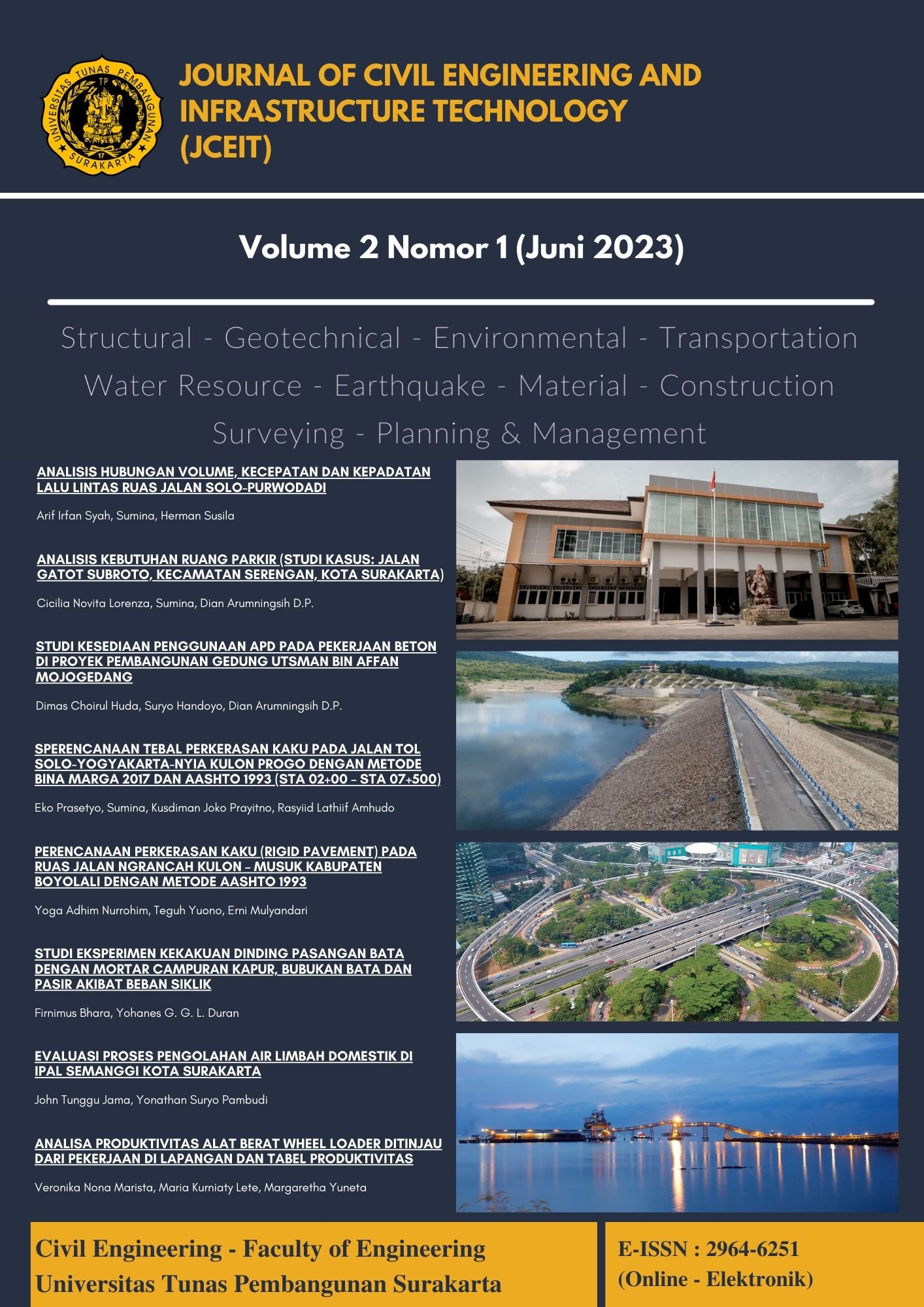PERENCANAAN TEBAL PERKERASAN KAKU PADA JALAN TOL SOLO-YOGYAKARTA-NYIA KULON PROGO DENGAN METODE BINA MARGA 2017 DAN AASHTO 1993 (STA 02+00 – STA 07+500)
Abstract
The Solo – Yogyakarta-NYIA Kulon Progo Toll Road is one part of the Trans Java toll road. The main purpose of the construction of the Solo-Yogyakarta-NYIA Kulon Progo Toll Road is to improve accessibility and connectivity between regions and increase the capacity of the road network between Central Java Province and the Special Region of Yogyakarta (DIY). In addition, the toll road serves as a support for the economic growth of the community and supports access to the New Yogyakarta International Airport (NYIA) airport located in Kulon Progo Regency, Special Region of Yogyakarta. For this reason, proper and effective toll road planning is needed, among others, by considering road capacity, large vehicle loads and high speeds, the life of the road plan and functions. Rigid pavement planning is carried out by two calculation methods, namely the 2017 Highways method and the 1993 AASHTO. The data required for planning are secondary data namely LHR (Average Daily Cross), base soil CBR (California Bearing Ratio), and rainfall. Based on the planning analysis data obtained, it was concluded that the thick planning of the rigid pavement of the Solo-Yogyakarta-NYIA Kulon Progo Toll Road, with the 2017 Highways method, obtained a plate thickness of 305 mm with an LMC (Lean Mix Concrete) foundation layer of 100 mm, and a drainage foundation layer of 150 mm. While the AASHTO 1993 method obtained a plate thickness of 285 mm with an LMC foundation of 100 mm.












